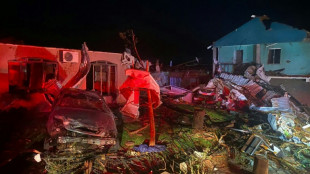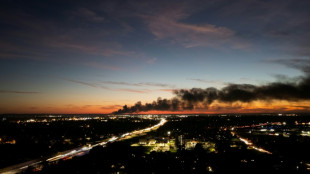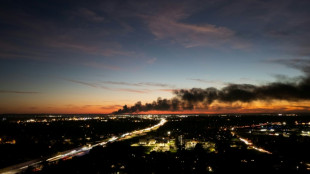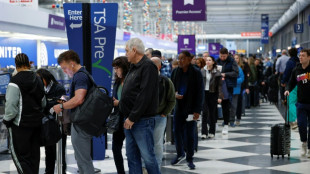
Grand Canyon fire rages, one month on

A month after a wildfire erupted at the edge of the Grand Canyon, US firefighters were struggling Monday to bring the blaze under control.
A lightning strike on July 4 -- Independence Day in the United States -- sparked a fire that spread rapidly on the northern rim of the canyon, a major draw for domestic and international tourists.
The Dragon Bravo Fire -- named after the Dragon rock formation near the conflagration's start -- was initially allowed to burn unabated as part of a natural cycle that thins vegetation and renews the landscape.
But a week later, strong winds whipped through Arizona and fanned the fire, pushing it through a major hotel, as well as the North Rim Visitor Center and some guest cabins.
A nearby water treatment plant was also damaged, venting chlorine gas into the environment.
The blaze, which now stands at over 123,000 acres (50,000 hectares), is being actively fought with more than 1,000 personnel on site, battling the flames from the air and from the ground.
"Yesterday, crews patrolled and monitored the east and west flanks of the fire," said a Monday update from incident commanders.
"Despite relative humidities as low as four percent they were able to hold the fire's growth to a minimum.
"In the southwest part of the fire, crews were able to go direct on the fire. Last night they walked sections of the perimeter searching for signs of heat, a process required before lines can be declared contained."
The level of containment -- the amount of the perimeter where firefighters have completely stopped the fire's progress -- stood at 13 percent on Monday.
Operations throughout the day looked set to be helped by the local topography along the northern part of the fire, despite continued critical fire weather, the update said.
"The pinon-juniper fuels in the area will assist since they do not carry the fire as effectively as mixed conifer or ponderosa stands," it continued, in reference to the vegetation growing in the vicinity.
Humidity remains low in the region, with a disappointing seasonal monsoon bringing rain far below expected levels.
Scores of wildfires burn across North America every year, many of them started by lightning.
Those that do not threaten population centers are now frequently left to burn by forest managers who understand the need for the kind of woodland renewal such blazes bring.
The policy contrasts with what was previously in effect for much of the last 150 years, where managers took an aggressive firefighting stance.
Doing so had the unintended effect of leaving some areas overstocked with fuel and liable to burn much hotter and faster when they did catch fire.
While wildfire is a natural phenomenon, human activity -- specifically the unchecked use of fossil fuels -- is changing the climate, often making blazes more likely and more destructive.
U.Hyeon--SG

 London
London

 Manchester
Manchester
 Glasgow
Glasgow
 Dublin
Dublin
 Belfast
Belfast
 Washington
Washington
 Denver
Denver
 Atlanta
Atlanta
 Dallas
Dallas
 Houston Texas
Houston Texas
 New Orleans
New Orleans
 El Paso
El Paso
 Phoenix
Phoenix
 Los Angeles
Los Angeles



